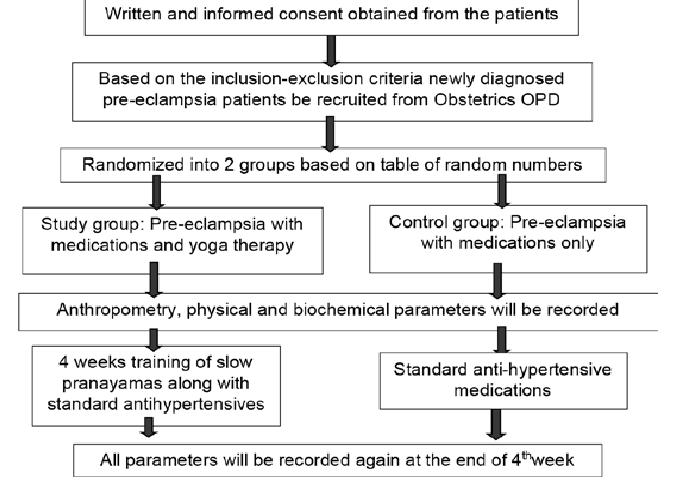Effect of Slow Pranayama on Heart Rate Variability in Pregnant Women with Preeclampsia
Abstract
Background and Aim: Hypertension is one of the common medical problems encountered in 10% of all pregnancies. Pre-eclampsia (PE), a hypertensive disorder during pregnancy has adverse pregnancy and cardiovascular (CV) outcomes. Though anti-hypertensive drugs are used in the management of pregnancy induced hypertension, termination of pregnancy alone offers complete cure. Hence optimizing the health care for pregnant women is an important step to achieve sustainable development objectives, prevention and treatment of hypertensive disorders. While studies have shown the beneficial effects of yoga on high-risk pregnancies, this randomized control trial investigated the effect of slow pranayamas on heart rate variability and CV risks in pregnant women diagnosed with preeclampsia. Methods: A total of 101 pregnant women who were diagnosed with pre-eclampsia were recruited from Women and Children Hospital, JIPMER and were randomized into yoga and control groups. The yoga group (n=48) received standard anti-hypertensive medication along with slow pranayamas, 2 times a day for 4 weeks between 20-34 weeks of gestation. The control group (n=53) received only standard anti-hypertensive medications during the same period. Heart rate, blood pressure and heart rate variability were assessed before and after 4 weeks. Results: Significant decrease in heart rate and blood pressure was seen in in pranayama group compared to control group. Also, LFnu and LF-HF ratio decreased significantly and HFnu increased significantly in pranayama group compared to control group. Conclusion: Four-week practice of slow pranayamas significantly improved the parasympathetic activity and decreased the sympathetic activity and reduced CV risks in preeclamptic pregnant women.






